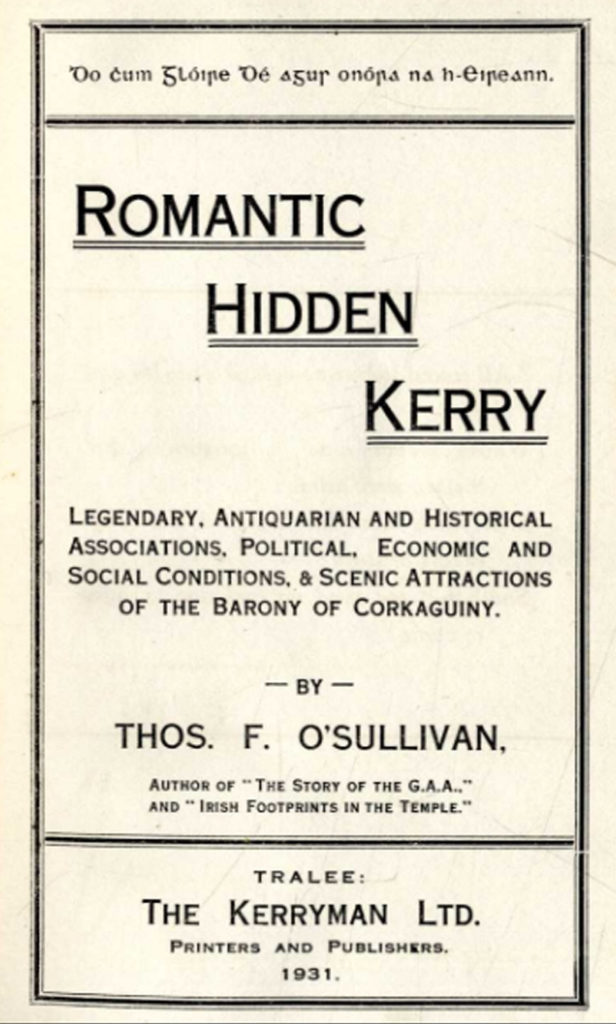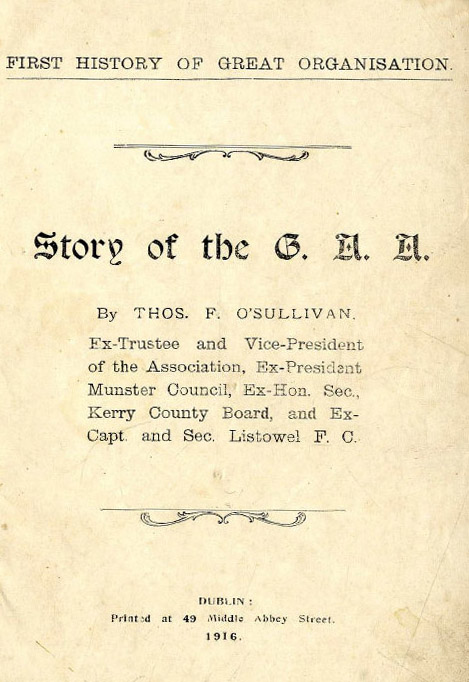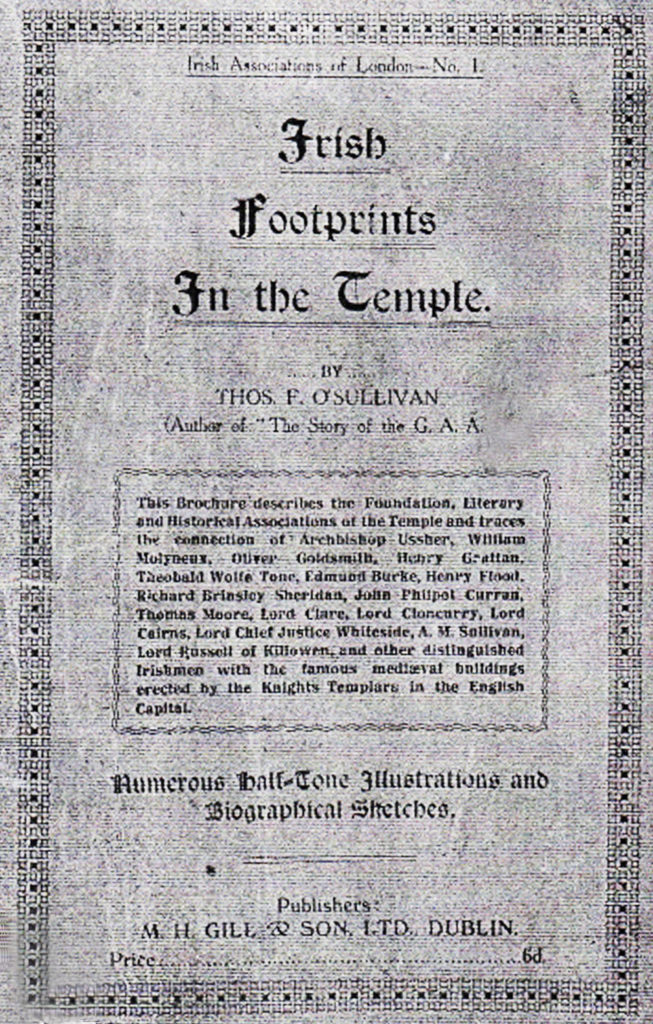Michael O’Donohoe studied T F O’Sullivan’s Romantic Hidden Kerry (1931), a rare find on the second-hand bookshelves today, and wrote his own useful index to its content. In this document are entries such as Ginkle besieging Limerick in 1691, and Capt John Zouche at Dun an Oir in 1580.
The collection also contains a small number of photocopies from Romantic Hidden Kerry which are marked with Michael’s detailed referencing.
The author of the book, Thomas Francis O’Sullivan was born in Glin, Co Limerick in December 1874.
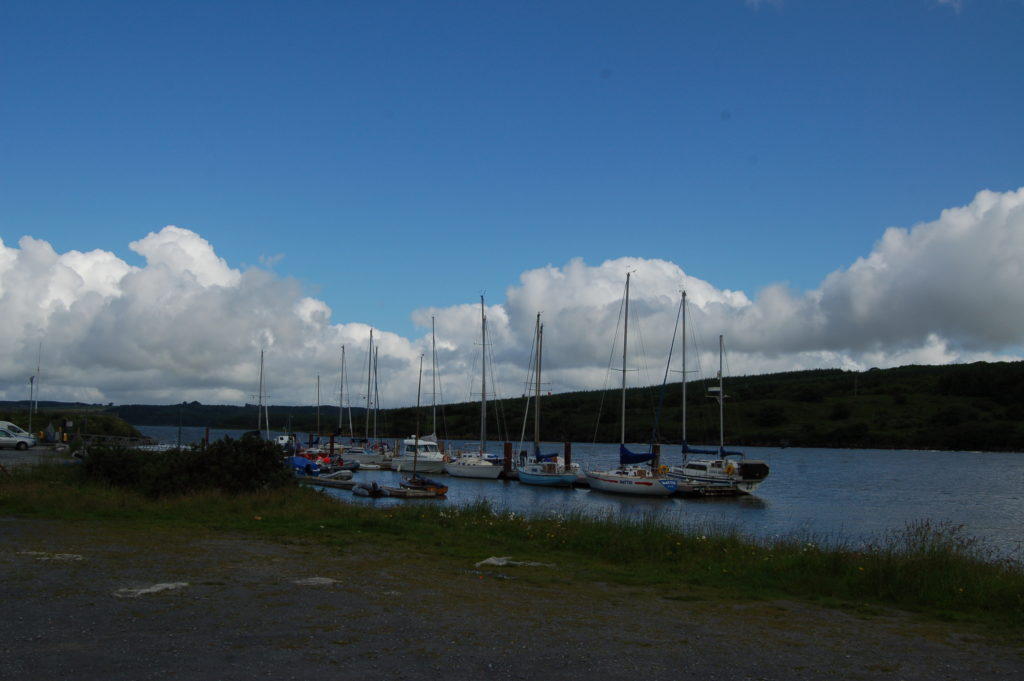
Treaty negotiations
He was educated in Listowel and began his career as a journalist working for The Kerryman. In 1907 he joined the staff on the Freeman’s Journal and was that paper’s London correspondent 1916-1924:
He actually covered the Treaty negotiations. He joined The Irish Press after it was established in 1931. He left the staff in 1937 and from then until his death in November 1950 he did freelance newspaper work and spent a lot of his time doing research work in the National Library.1
O’Sullivan was chairman of the Munster Council from 1903 to 1906 and was a member of the Central Council. He was also involved in the ’98 Memorial Committee in Tralee and spoke at ceremonies commemorating the Manchester Martyrs.
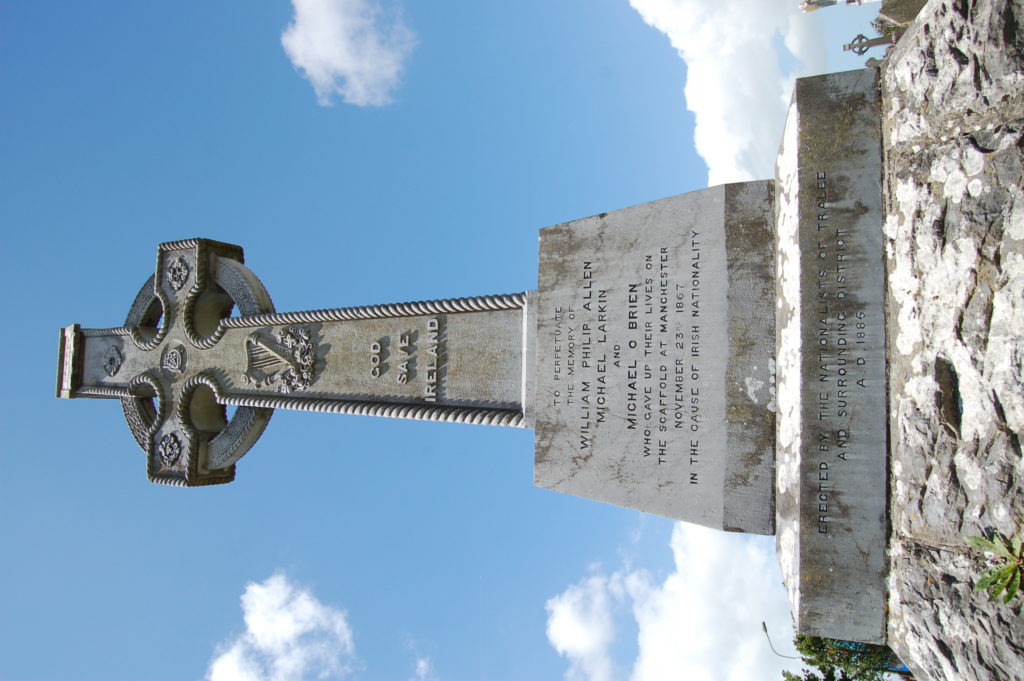
Story of the GAA
In 1916, O’Sullivan published Story of the GAA with Portraits (a copy of which is held in the collection) evidently the first history of the association in which he is described as ‘Ex-Trustee and Vice-President of the Association, Ex-President Munster Council, Ex-Hon Sec Kerry County Board and Ex-Capt and Sec Listowel F.C.’ (a summary of the contents of the book is given at the foot of this post).
Another work, Irish Footprints in the Temple, was delivered as a lecture in the Carnegie Library, Listowel in 1917 during the course of which O’Sullivan revealed the following:
Since October last it has been my lot to reside almost permanently in London. During that period my work was entirely in the English House of Commons … I commenced a series of investigations into the Irish historical associations of the city … I first reverently turned my footsteps to the Temple with which the names of so many distinguished Irishmen have been identified for almost four centuries and my address tonight is the result of numerous visits to those historic buildings.2
O’Sullivan commenced his lecture with the history of the foundation of the Knights Templar in London and in Ireland, and opened with lines from J[ohn] F[rancis] O’Donnell’s poem, ‘Goldsmith’s Grave’:
I love this quiet Temple nook, This ancient haunt of wren and rook, Thick writ with legends like a book. Dark-circled in the town it lies, Above it loom the misty skies, Outside the songs of commerce rise. Ten paces from the battling street Lurks the old-fashioned, quaint retreat, A land of murmurs loud and sweet. Afar the yellow river gleams, Within there is a sound of streams, An island lulled in dreams it seems. There, open to the sun and rain, There, alien unto tears and pain, There, whilst the seasons wax or wane, Rich-hearted Goldsmith takes his rest, Earth's silent, unobtrusive guest, Between the sunrise and the West.3
‘What a litany of great names come almost unbidden to the lips of the student’ he mused:
Oliver Goldsmith, Edmund Burke, William Molyneux, Theobald Wolfe Tone … what mingled feelings of pride and sorrow and shame do these names evoke. Surely there are some of them that Ireland would never willingly let die? 4
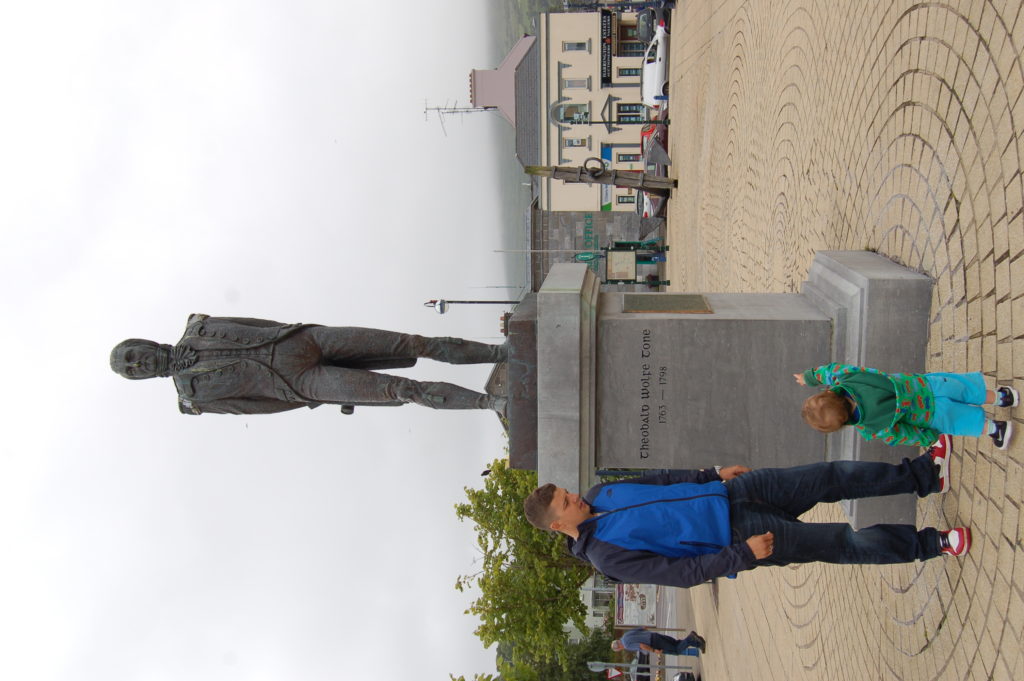
Thomas Francis O’Sullivan died on 14 November 1950. The following was recorded in the Irish Press, 17 November 1950:
The remains of Mr Thomas F O’Sullivan, the journalist and author, were removed from Miss O’Donel’s Nursing Home to the Franciscan Church, Merchants’ Quay, Dublin last night. Chief mourners: Mrs Mary A Powell, Tralee (sister); Michael, Eugene, Dr George and Thomas Powell and J J O’Sullivan, Manchester (nephews); Mrs M K O’Sullivan, Listowel (niece) and Mr Liam Skinner, Irish Press (cousin). The funeral takes places this morning from the Franciscan Church, Merchants’ Quay after 9 o’c Mass arriving at Listowel at 7pm and Tralee at 8pm. The funeral will take place tomorrow to Rath Cemetery after 10 o’c Mass at St John’s Church, Tralee.
___________
Story of the GAA with Portraits (1916) held in IE MOD/C14. Produced as the GAA ‘entered on the thirty-first year of its existence … It has been the means of saving thousands of young Irishmen from becoming mere West Britons’. Its chapters run thus:
Introductory and note by Rev James B Dollard pp1-2
Chapter I Sketch of the Founder, Michael Cusack (Citizen Cusack) pp3-4
Chapter II First Appeal to Irish People pp4-6
Chapter III The Association Established pp7-9
Chapter IV Parnell, Croke, and Davitt become Patrons pp9-11
Chapter V Organizing Meeting in Cork pp11-12
Chapter VI Newspaper Articles and ‘Address to Irish People’ pp12-14
Chapter VII Opposition to the Association pp14-18
Chapter VIII The First Year’s Work pp18-21
Chapter IX Historic Athletic Meetings pp21-23
Chapter X Book Prizes and First Annual Convention pp24-27
Chapter XI The Association in 1886 pp27-29
Chapter XII Athletic Disputes, Tournaments, and Important Speeches pp30-33
Chapter XIII Rugby Players Excluded, Athletic Championships pp34-36
Chapter XIV Second Annual Convention (includes GAA poetry by Ellen O’Leary, Rev Jas B Dollard and Maeve Cavanagh) pp37-41
Chapter XV An Historic Year (1887) includes County Conventions, the Association in the North, Resignation of Mr Wyse Power, Exclusion of the RIC, Championship Draw, Resignation of Mr Maurice Davin, Gaelic Newspapers, Weight-throwing and jumping pp42-47
Chapter XVI Famous Convention pp47-53
Chapter XVII Reconstructing the Association pp53-55
Chapter XVIII First All-Ireland Hurling and Football Championships pp56-58
Chapter XIX World’s Handball Championship includes poems by Rev Jas B Dollard, Thomas Francis Meagher pp59-62
Chapter XX Association Re-Constructed pp63-67
Chapter XXI The American “Invasion” pp67-71
Chapter XXII Unfinished Championships pp72-76
Chapter XXIII The Association in 1889 includes note on the Kildare County Committee’s repair of Wolfe Tone’s grave and others pp76-82
Chapter XXIV Handball Championship and Annual Convention includes note on Handball in Kerry and Kerry’s Important Suggestions pp83-86
Chapter XXV The Association in 1890 pp86-89
Chapter XXVI Athletic Feats and Handball Contests pp89-91
Chapter XXVII The Association in 1891 includes notes on Parnell’s funeral and P W Nally’s death pp92-97
Chapter XXVIII The Association in 1892 includes diagram showing placement with the old rule of 21 aside pp98-101
Chapter XXIX The Association in 1893 includes note on Michael Davitt’s Bankruptcy pp103-106
Chapter XXX Taltean Games and Festivals pp107-110
Chapter XXXI The Association in 1894 includes note on death of William Real, weight-thrower, of Pallasgreen pp111-114
Chapter XXXII The Association in 1895 – World’s Handball Championship pp114-120
Chapter XXXIII The Association in 1896 pp121-125
Chapter XXXIV Hurling and Football Championships and Croke Cup Competitions of 1896 pp125-128
Chapter XXXV The Association in 1897 pp129-133
Chapter XXXVI The Association in 1898 includes note on ‘patriotic projects’ and diagram showing plan of field with 17 players aside pp133-139
Chapter XXXVII The Association in 1899 includes laying of the foundation stone of the Billy Byrne Monument in Wicklow. A note on this page states ‘All the foregoing articles including the introduction appeared in the Dublin Evening Telegraph between October 1913 and October 1914 after which date they were continued in a summarised form in the Sunday Freeman’ pp140-143
Chapter XXXVIII The Association in 1900 includes note on memorial unveiled and reorganisation of Kerry County Board pp143-147
Chapter XXXIX The Association in 1901 ‘The foundation of the Association as we know it today … was laid in 1901’ includes note on death of James Stephens and poem by Brian na Banban (Brian O’Higgins) pp147-153
Chapter XL The Association in 1902 includes note on Dr Thomas W Croke’s death pp153-157
Chapter XLI The Association in 1903 includes note on Gaelic Cycle Association and the Emmet Centenary and the football final between Kerry and the London Irish on 12 November pp158-163
Chapter XLII The Association in 1904 includes note on football final between Kerry and Dublin pp164-169
Chapter XLIII The Association in 1905 includes note on Camoguidheacht matches and death of ‘Prominent Gaels’ pp169-175
Chapter XLIV The Association in 1906 includes notes on death of Michael Davitt and Michael Cusack and other ‘Prominent Gaels’ pp175-181
Chapter XLV The Association in 1907 includes death of John O’Leary, P N Fitzgerald and Thomas Dunne pp182-186
Chapter XLVI The Association in 1908 includes memorials and purchase of Jones’s Road Dublin by Mr Dinneen pp187-195
Chapter XLVII Games and Nationality by Dr Douglas Hyde as published in The Gaelic Athletic Annual 1908-9 pp196-198
Chapter XLVIII Suggestions to Gaels by Thos F O’Sullivan, October 1916, pp198-200
_______________________
1 The Kerryman, 30 October 1981. He was also chairman of the Press Gallery. His brother John Francis O'Sullivan was also a journalist. 2 Published in 1918; a copy of Irish Footprints in the Temple held in IE MOD/A23. Other works include The Young Irelanders with plates including Portraits (1944) and Fenian Memories by Mark Francis Ryan edited with an introduction by T F O'Sullivan (1945). Further reference see entry in Dictionary of Irish Biography. See also 'Gleanings on T. F. O'Sullivan's Romantic Hidden Kerry' in The Catholic Bulletin, Vol XXII, October 1932, pp777-8. 3 Verse in full in Penny Readings for The Irish People, Vol IV, Dublin 1885, pp261-264. Print of same in IE MOD/A23. 4 He also named Henry Grattan 'and his great rival, Henry Flood', John Philpot Curran, Thomas Moore, Richard Brinsley Sheridan, Lord Chief Justice Whiteside, Lord Cloncurry, Lord Cairns, Robert Nugent afterwards Earl of Clare; A M Sullivan, Lord Charles Russell 'to mention only a few of the more notable men of Irish birth who have been associated with the famous buildings'. Full report, The Kerryman, 13 October 1917; print of same in IE MOD/A23.


